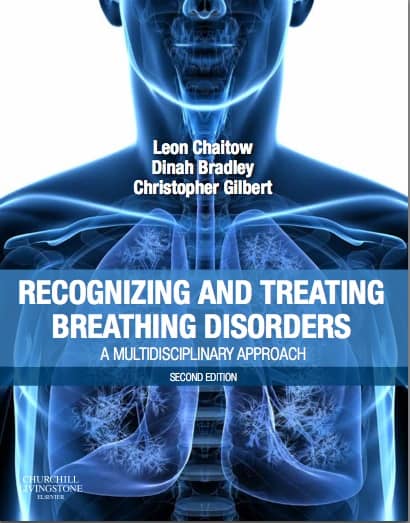I‘ve been working at updating my Power`Point slide presentation for a course I’m teaching in Barcelona in late February..and came across some fascinating variations on the topic of breath holding times (BHT) – something that is used both in assessment, and for followers of the Buteyko system, as part of rehabilitation.
February 27/28/29 Escuela Universitaria de Osteopatía,
Universidad de Murcia – in Barcelona.
CONTACT: Jorge Arande jorgaranda@gmail.com
>>>>>>>>>>>BREATHING PATTERN REHABILITATION<<<<<<<<<<<
FOR COURSE DETAILS SEE THEIR WEBSITE http://www.euosteopatia.es/curso-chaitow-2015/
Let me explain:
One of the effects of over-breathing/rapid breathing/upper-chest breathing – is excessive exhalation of carbon-dioxide (CO2)
When the bloodstream contains levels of CO2 that are inappropriately low in relation to metabolic needs a range of changes occur as Blood pH becomes more alkaline – that manifest for the individual as symptoms ranging from reduced oxygenation of tissues (diameter of blood vessels reduces – see picture), to reduced pain threshold, less efficient motor control, gut dysfunction, feelings of anxiety as well as spasms, cramps etc etc…..
People who habitually overbreath develop lower tolerance for CO2….virtually setting their respiratory centre in the base of the brain (see illustration)


to demand a breathing rate that maintains CO2 at its’ habitual level.
When the breath is held CO2 levels rise, and an inhalation ‘demand’ is triggered….therefore the length of time that is comfortable for holding the breath indicates the CO2 tolerance level.
The Buteyko system employs this response to breath holding in a number of ways to encourage a gradual increase in tolerance.
Learning slower diaphragmatic breathing habits does the same.
….but all this is also affected by altitude – whether you are a sea level or higher at the time, as well as your history of moving from —say Denver or Mexico City or Johannesburg (all are a mile high) to sea level, or vice versa….?
Some of the variations I found yesterday include:
– Altitude affects BHT. “Normal” – or average – at sea level is suggested as 70 seconds (Chang 1996)
– In one study at ±2500 meters BHT averaged less than 30 seconds (Bradley H. 2014)
– Bradley D (2013) notes that “hyperventilators seldom hold beyond 10 to 12 seconds before gasping”
– Preter and Klein (2008) suggest that inability to maintain a held breath e.g. less that 30 seconds) may relate to CO2 build-up and a ‘suffocation alarm’
Low CO2 levels induces cerebral vasoconstriction
Viola et al (2012) measured changes in CBF – using near-infrared spectroscopy – in 10 healthy volunteers – who either held their breath for 30 seconds (increasing CO2 levels), or hyperventilated for 2 minutes (reducing CO2 levels).
They found a strong and significant direct correlation between cerebral micro-circulation – with enhanced CBF after breath holding & reduced CBF after hyperventilation
In the Buteyko system, 2 methods are used in retraining:
– Control Pause = Exhale, hold breath OUT for as long as is comfortable (i.e. not forced)
– Maximum Pause = Exhale, hold breath OUT for as long as possible
PLEASE DON’t EXPERIMENT WITH THESE METHODS IF YOU HAVE ANY TENDENCY TO HYPERVENTILATION
And of course breathing rates are also affected by a wide range of other factors….. to be discussed in the wonderful city of Barcelona….
REFERENCES
- Bradley H Esformes J 2014 Breathing Pattern Disorders and Functional Movement. Int. Jnl. Sports Physical Therapy. 9(1):28-39
- Bradley D. In: Chaitow et al Recognizing & treating breathing disorders. Elsevier pp122
- Buteyko K 1990 Buteyko Method:Experience of Application in Medical Practice. Moscow: Patriot
- Chang L, Landgren C 1996 . Maximal breath-holding time and immediate tissue CO2 storage capacity. Eur J Appl Physiol. 73:210-218.
- Preter M Klein D 2008 Panic, suffocation false alarms. Progress in Neuro-psychopharmacology & Biological Psychatry 32(3):603-612
- Viola S 2012 Correlation between the arterial pulse wave of the cerebral microcirculation and CBF during breath holding and hyperventilation in human. Clinical Neurophysiology 123:1931–1936
An additional illustration from a chapter on yoga influences in “Recognizing and Treating Breathing Dysfunction” —-where slow breathing changes the tolerance to CO2 — may be of interest?

